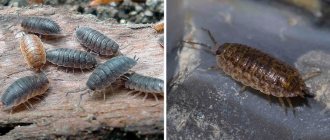Most summer residents and villagers keep chickens to feed their households not only tasty, but also fresh, harmless products. Eggs are used to fry omelettes, make filling for pies, and poultry meat is used for first and second courses. But sometimes rats are able to enter an outbuilding. Rodents bring many problems to owners, so it is necessary to immediately take measures to expel them. How to get rid of rats in a chicken coop, what methods to protect the building from invasion?
The chicken coop is a real paradise for aggressive pests. The building is always dry, and even in severe winter cold it is warm. There is a lot of food here, ranging from full feeders to stocks of grain or animal feed. In addition, rats will never miss an opportunity to profit from chicken eggs. That is why they are able to attack chicken coops with amazing tenacity and inhabit them with lightning speed.
Under what conditions do rats appear?
Keeping birds in a chicken coop requires special conditions in which rats also feel comfortable. A warm and dry room is an ideal refuge for these animals, especially during winter.
Keeping birds in a chicken coop requires special conditions in which rats also feel comfortable.
It will be especially easy for rats to settle in a chicken coop if a temporary home is built for the chickens, and not a solid structure with a solid foundation and floors filled with a dense layer of concrete.
If the design of the chicken coop presupposes the presence of space between the floor and the ground, then for rats or mice this is a real expanse. They easily penetrate there and move freely there, live and reproduce.
The likelihood of rats increasing as autumn approaches. In the summer it is easier for them to find food in the forest and fields, but with the onset of cold weather they have to look for new sources of food, and they attack farms.
What products are used as bait?
A rat will never eat poison just like that. Toxic substances must be disguised and served “in a tasty sauce” using bait. Rodents are omnivores, but most of all they like fried seeds, meat, fish, cheese, boiled eggs, and lard. Pests do not disdain dry cat or dog food.
Reference. Ready-made products for killing rats already contain attractive components - starch, flour, oil, crushed grain, vanilla, cheese flavorings and others.
Rats are very cunning. Having discovered a new food source, they do not attack it, but send a taster there. As a rule, this is a young, inexperienced male. If, after trying the food, he dies after a while, the rodents will not approach the bowl of dangerous food. For this reason, experienced farmers recommend feeding rats with foods without added toxic substances for several days in order to lull their vigilance.
Minced meat is used as bait
Signs of rats in a barn or chicken coop
You can tell that there are rats in the chicken coop by the following signs:
- a specific odor reminiscent of ammonia;
- the appearance of rat droppings on the floor - large black granules;
- the appearance of holes and passages in the floor and walls;
- the appearance of tears and holes in bags of poultry feed;
- loss of eggs and strangled young birds;
- extraneous rustles, fuss and squeaking in the chicken coop at night;
- damaged wires and cables running close to the chicken coop;
- death of birds from an infectious disease (possibly as a result of infection from rodents).
Try to carefully inspect the entire room in order to detect signs of harmful neighbors in time and promptly take action.
Preventive measures against the appearance of rats
Try to carefully inspect the entire room.
A far-sighted farmer must anticipate the danger of rodents and take preventive measures even at the stage of building a chicken coop. This will be of great help in protecting the chickens when rats are invading their home.
Chicken coop walls and floor
During construction, it is recommended to adhere to the following recommendations:
- The floor of the room must have a concrete base.
- To build walls (or at least parts of them half a meter from the ground), it is best to use brick - it is much more difficult for pests to get through such a barrier than through wood.
- The bottom of the walls must be sheathed with sheet iron and preferably so that each sheet goes deep into the ground.
- It is better to cover the foundation of the chicken coop with fine mesh galvanized mesh or lay it under a layer of plaster if the walls will be treated with plaster.
- There should be no voids in the floor and walls; any cracks and holes must be carefully sealed with glass wool and cement with the addition of broken glass.
- When installing doors, you need to make sure that they close as tightly as possible.
These tricks will help turn your chicken coop into a rat-proof citadel.
Rat poison
Even if the rats have not yet visited the chicken coop, there is a reason to purchase and place rat poison in advance in places inaccessible to chickens and other domestic animals.
Be sure to read:
How to make a chicken feeder: drawings, dimensions, examples from wood, plastic bottles and pipes
Even if the rats have not yet visited the chicken coop, there is a reason to purchase and add rat poison in advance
Such a means of defense will help destroy at least some of the rats trying to get into the house and scare away their relatives.
Glass and crushed stone
A mixture of crushed stone and glass is a common and effective method. This mixture is used at the construction stage when laying the foundation.
Crushed stone is mixed with a large amount of broken glass and poured into the foundation. After this, it is filled with concrete, into the solution of which broken glass is also added. A rat can overcome ordinary concrete, but it will be difficult for it to fight glass.
A mixture of crushed stone and glass is also laid out on the ground around the perimeter of the entire chicken coop. A solid layer at least 15-20 cm wide will become a serious obstacle to pests.
The mixture can also be placed in the chicken coop itself - it is safe for the rough skin of chicken feet.
Four-legged helpers
Pets are effective helpers for fighting and repelling rodents and small predators. Not all cats and dogs can become hunters, but they can easily scare off uninvited farm visitors, keeping chickens safe. Some farmers specifically train cats and dogs for this purpose.
Why do you need a rooster in a chicken coop? Read here.
Pied Cats
Since ancient times, people have used cats to catch rodents. They were trained from childhood and selected. An adult rat is a great threat to a cat; large individuals can exceed it in size and body length. It is believed that the most effective hunters are yard cats, as well as native breeds (Siberian, Siamese, European Shorthair). Females demonstrate greater efficiency in catching rats.
A trained cat can be left directly in the chicken coop overnight.
If your pet is bitten by a rat during an attack, you should immediately contact a veterinarian and get the necessary help.
Watchdogs
Dogs are used as alarms because, due to the agility and small size of small predators, they are simply unable to catch them. It is advisable to position the booth so that the chicken coop is in sight. When wild animals appear, a trained dog will give you a signal. Some hunting breeds are also suitable for catching animals, for example, terriers, dachshunds or huskies. A working dog is trained from childhood; it must not only be able to detect a scent, but also bring you prey.
Methods to control rats
There are several alternative ways to control rats.
Yard cat
People who own households claim that the best assistant in the fight against rodents is a yard cat. The animal is good at catching and destroying pests that encroach on the chicken coop.
Pied Piper Cat
However, a pampered domestic cat is unlikely to be suitable for such a task: rats are aggressive animals that know how to act together. A few rats may even attack a cat and kill it.
A kitten should be taught a warlike character from a very early age - accustomed to the outdoors, so that it is well acquainted with the territory of the farm, has excellent orientation and actively develops hunting skills. The kitten will grow into a dexterous and strong animal that will not let pests escape.
Naturally, the more cats, the better: for example, two cats will destroy rats much more effectively.
Rat trap made from a plastic bottle
You can make effective rat traps with your own hands without spending money. For example, there are many ways to make traps from ordinary plastic bottles.
Option 1
If you use a bucket or can to catch a rat, then it is useful to first pour water into them - without water, the animal will easily jump out of the trap.
You will need a deep bucket of water, a board, a plastic bottle and a long rod.
Procedure:
- Having made a hole in the lid and bottom of the bottle, string it onto a rod and place the resulting structure on the edges of the bucket (the bottle should easily spin on the rod).
- The middle part of the container (in the area of the label) is coated with aromatic bait, and the rodent’s access to the bottle is ensured using a bridge made of a board that must be placed against the bucket.
- The rat will climb onto the bridge and try to climb onto the bottle, wanting to eat the filling. The bottle will spin, throwing the rodent into the water.
Option 2
For the second method, you will need a large plastic bottle and a container of water (the deeper and larger it is, the less chance the rodent has of getting out and saving itself).
Procedure:
- The bottle needs to be cut on both sides, making a tunnel out of it, at one end of which the filling will be located.
- Place the tunnel on the edge of a flat surface (for example, a high table), near which there is a container of water. The location should be like this: one half lies on the surface, and the second (the bait at its end) hangs over the water.
- As soon as the rodent reaches the bait, the tunnel will turn over under its weight, and the animal will end up in a container of water.
A similar design can be made from a bucket and a beer can.
The photo below shows a corresponding example:
DIY rat trap
Option 3
For the third method, you will need a large plastic bottle with a volume of 5-10 liters.
How to make:
- Step back 5-10 cm from the neck and cut off the top of the bottle. Turn the part with the neck over and insert it into the second resulting part so that the neck faces inward. The container will now look like a sippy cup.
- Secure the resulting structure firmly with a stapler or tape.
- Place a fragrant bait at the bottom of the bottle, place the bottle horizontally on an elevated surface (table, shelf, high step) so that one half of it is in a hanging position.
- The rat will climb inside the structure, the bottle will turn over and fall under its weight, and the rat will no longer have a chance to get out of it.
Be sure to read:
How to make a cage for chickens with your own hands: photos, video instructions, sizes and options?
Diagram of a rat trap made from a plastic bottle
Important! Check the trap made of plastic material often - the rat can chew through the walls and escape from captivity.
Folk remedies for rats
Proven folk remedies in the fight against rats sometimes work better than modern technologies.
Ash makes life difficult for rodents
The most common methods:
- Furnace ash. It is safe for humans and birds, but harmful to rats. Simply scatter the ashes on the floor of the coop and near the rat holes. Sticking to the rodent's paws and fur, it then enters the stomach, causing severe pain and even death.
- Flour and building plaster. After mixing these ingredients in a 1:1 ratio, put the mixture in a small container and place it in a place where rats often run. Place a container of water nearby. After a heavy meal and drink, the mixture will begin to solidify in the animal’s stomach and lead to death.
- Wine cork and bread. Cut the cork into small pieces, mix with bread and add a drop of unrefined oil. The rat will eat the treat, and the plug will begin to swell in its intestines and, accordingly, will get stuck.
- Herbs. Rats are sensitive to odors, so some plants can help get rid of uninvited guests. Rats cannot tolerate the smell of elderberry, garlic, wormwood, mint, chamomile and wild rosemary. If you plant them next to the chicken coop, the rodents will avoid it. These plants also help if you place them fresh or dried near rat holes and in the corners of the poultry house.
Before you feed your unwanted guest poison, try to gain his trust. Place regular food in the same place for several days, and then the rodent will happily eat the prepared poison without suspecting a catch.
Advice! Make all preparations with gloves - rats keenly sense the smell of a person and will not touch food that smells like your hands.
Herbs
Many rodents, as well as insects such as bedbugs, cockroaches or lice, cannot tolerate the smell of various herbs. So the rats, as soon as they smell these aromas, will want to run as far away from your chicken coop as possible.
Mint
Rats have a particular dislike for mint. This plant is akin to a weed, and it can be found in almost any area, growing in a chaotic manner among noble plantings. However, its mere presence in the garden is not enough. In order for mint to be useful, it is picked and dried, then tied into small bouquets and hung in the corners of the chicken coop.
Chickens and other birds are neutral to the smell of mint, but rats are unlikely to decide to stay in such a place for a long time. Or they may not want to enter it at all.
Sagebrush
Wormwood has a similar effect on the nervous system of rats. It grows much more actively than mint, and quite often gardeners pull it out as an unnecessary weed, simply not realizing its beneficial properties. In order to use wormwood against rats, it must be collected during the flowering period, dried, and hung in the corners of the room for the winter. Dried wormwood can also be placed under stacks or spread between sheaves.
Blackroot
Dried black root, which is usually called mouse spirit or cat soap, is good against rats. It is also laid out in the chicken coop either in the hay or on the floor.
Bird cherry and elderberry
To protect not only the chicken coop, but also the garden, you can plant bird cherry and elderberry bushes. However, you need to be careful with the latter, as elderberry is poisonous. You need to plant it so that small children cannot reach the bush. If it is not possible to either plant a bush or fence it, then you can put dried elderberry branches in the chicken coop.
Herbs against rats in the chicken coop
Practical methods of repelling rats
What to make bait for rats
People have come up with a lot of different means for catching or scaring away rats.
Mechanical methods
These are various means of physical influence on rodents using purchased or homemade traps and traps. A large selection of various devices helps fight pests very effectively.
Modern traps are capable of catching several individuals at once, killing on the spot or keeping them captive, shocking them or fixing them tightly, limiting movements (for example, special glue). The price range is wide, and mechanical devices for catching rats can be purchased at prices ranging from 200 to several thousand rubles.
Biological
The biological method is based on the use of other animals, such as cats. Owls and other predators are also natural enemies of rodents in nature.
Chemical or medicinal methods
These are the most common methods of fighting rats, involving the use of various poisons and poisons. Preparations are available in the form of powder, granules, tablets, etc.
There are different types of poisonous substances - some provoke instant death, others kill the animal slowly, over 1-2 weeks.
In rat society there is a strict hierarchy, according to which the “lower classes” are the first to try unknown food. If nothing bad happens, the rest of the rats safely eat the same food. Also, poisons often have no effect - rats quickly develop immunity.
Advice! Choose drugs with the addition of mummifying substances. They do not allow the rat's corpse to decompose, emitting an unpleasant odor - it simply dries out.
Ultrasonic repellers
Ultrasonic repellers are devices that are safe for humans and pets and produce sound at a frequency audible only to rodents. The sound causes them to panic, and they will not risk approaching the room with such a device.
Be sure to read:
Do-it-yourself chicken coop for 10 chickens: drawings, materials, step-by-step instructions
Ultrasonic repellers
There are both small, low-power devices that run on batteries, and more serious devices that run on mains power.
When choosing a repeller, pay attention to the size of the area it can cover and compare it with the area of your chicken coop.
The waves emitted by the device do not pass through walls, so each room will need a separate device.
Give preference to a device with the ability to independently adjust the ultrasonic vibration frequency. Rats get used to the same sound, and then soon the repeller will have no effect.
Advice! When purchasing, make sure that the device is capable of operating at low temperatures, because most often you have to deal with rats in winter.
Use of pets
Pets - cats, dogs - help many farmers by protecting chicken coops from ferrets. They scare away predators, making it difficult to calmly hunt the bird.
The ferret is an active, cautious animal, so it is difficult to catch the enemy of poultry birds, but some pets are valuable hunters. Agile dogs and cats are capable of unexpectedly grabbing and crushing a ferret, weasel, or marten.
Important! Pets that hunt predators must be vaccinated against rabies. Ferrets and other breeds of domestic ferrets are useful for farmers
They catch rodents by driving wild polecats out of their territory. Well-fed pets do not hunt birds. You should not allow tame ferrets only to the chicks: the chicks will turn out to be a toy for hunting and entertainment
Ferrets and other breeds of domestic ferrets are useful to farmers. They catch rodents by driving wild polecats out of their territory. Well-fed pets do not hunt birds. You should not allow tame ferrets only to the chicks: the chicks will turn out to be a toy for hunting and entertainment.
Why are rats dangerous for birds and humans?
At the slightest suspicion of rodents appearing in the poultry house, you should immediately begin to take action. Pests pose a great danger to chickens and their owners.
Rats raiding a chicken coop are dangerous and lead to unpleasant consequences:
- exposure to a dangerous infection leading to the death of chickens and adults;
- infestation of the poultry house with skin parasites;
- missing eggs (rats steal them to eat);
- death of young animals (rats strangle chickens);
- damage to the floor and walls of the chicken coop, damage to cables and wires.
In order for the birds to live in comfort and safety, and the owners to be able to eat chicken and eggs without endangering their health, the fight against rats should begin immediately.
Poultry house reconstruction
The main purpose of a chicken coop is to keep the birds comfortable and to protect the premises from pests. This should be taken care of at the stage of its construction or during operation. Remembering how rats steal eggs, showing their agility, you need to create unfavorable conditions for them. Since there is plenty of food in the chicken coop, you need to be concerned about its tightness. For this:
- When building a chicken coop, place a concrete foundation under it.
- Make the walls impenetrable. Rats are able to penetrate through a very small hole, so it is advisable to cover the side surface of the building with metal sheet to a height of at least a meter.
- Install metal doors so that there are no gaps.
- The windows should be glazed and the floor concreted; the rats will gnaw through all other materials and insulation.
- Keep the room clean. Systematically remove droppings, monitor the hygiene of food trays, and collect eggs in a timely manner.
Having eliminated the access of rodents from the outside, you can start exterminating them inside: yourself or invite specialists.
How to protect a bird from eating poison
Chickens can also be poisoned and die from the poison. Even if the poison eaten did not affect the condition of the bird, its eggs and meat may become unfit for human consumption and dangerous to human health.
How to protect chickens from eating poison:
- Use toxic substances carefully and place poisoned bait only in places where birds cannot reach it.
- Try to carefully monitor the premises and feeders - a rat can drag the poison into a place accessible to the birds, and the chickens will eat the poison.
- Carefully monitor the condition of the birds and note any changes - the appearance of lethargy and unusual behavior may signal poisoning.
Destruction of chicken eggs by rodents
Can rats steal eggs from a chicken coop? It turns out they can, and they even have several ways. They act:
- One at a time - they take the egg with two front paws, and move with the help of their hind paws, crawling.
- In twos, one grabs the prey and turns over on its back, while the other drags it by the tail to a secluded place.
It is noted that rats store stolen goods in a certain place and feast on them when the product goes rotten. Now you know how rats steal eggs and ruin their owner. Moreover, these animals move not only on the floor, but also on the walls and ceiling.










